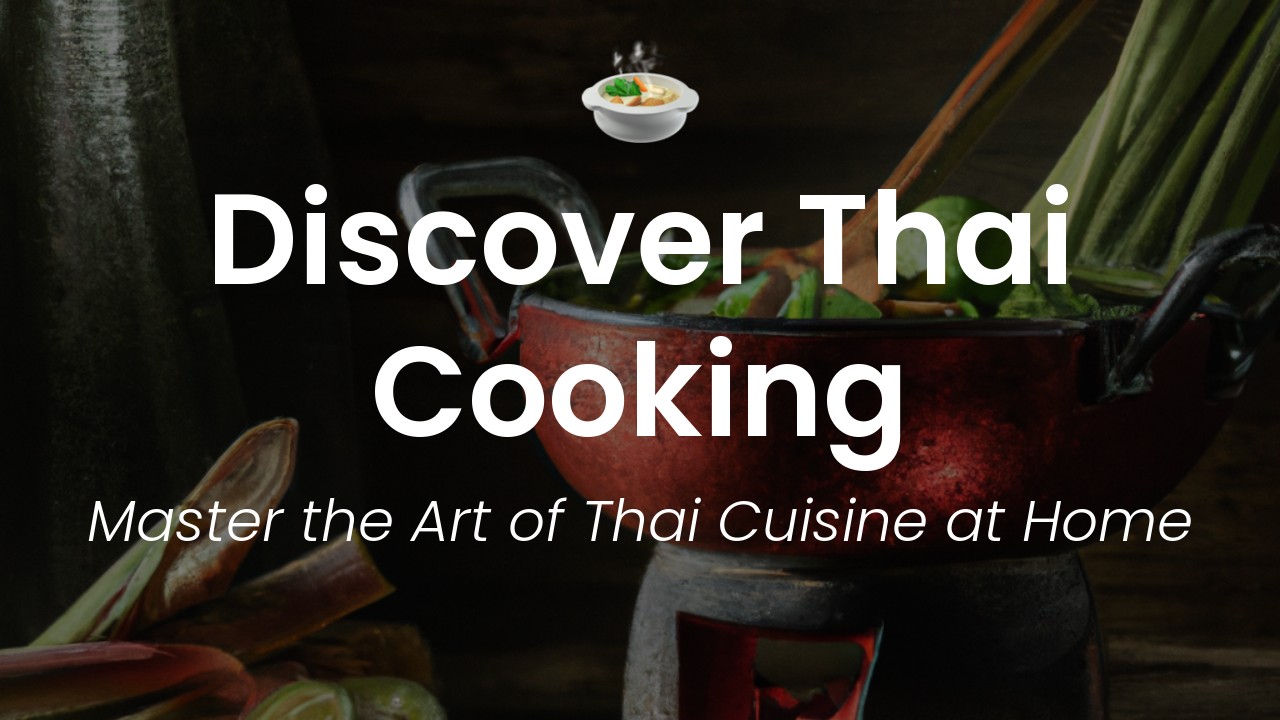As a Thai woman, I have always been passionate about our country's rich culture, especially our delicious cuisine. Thai food is known for its colorful ingredients, bold flavors, and unique blends of sweet, sour, salty, and spicy tastes. Each dish has a story to tell, a history that reflects our diverse cultural background and the natural resources that surround us.
In this blog post, I want to take you on a journey through Thailand's culinary delights and show you how to unlock its flavors through the art of Thai cooking. Whether you're a seasoned chef or an amateur in the kitchen, Thai cuisine has something to offer for everyone. In this article, you will learn about the essential ingredients, basic techniques, and traditional recipes that make up our signature dishes.
From delicious curries to tangy salads, there are countless ways to enjoy Thai food, and cooking it yourself is a great way to immerse yourself in our vibrant culture. With the right techniques and ingredients, you can recreate the vibrant flavors of Thailand right in your own kitchen. So let's get started on this culinary adventure and discover the soul of Thai cuisine!
Benefits of Learning Thai Cooking
Thai cuisine is renowned worldwide for its bold flavors and exquisite presentations. From the spicy and sour tom yum soup to the sweet and creamy mango sticky rice, Thai dishes are a feast for the senses. If you love Thai food and want to unlock the secrets of its flavors, there's no better way than to learn Thai cooking. Here are some of the benefits of taking a Thai cooking class:
1. Understand the Ingredients and Techniques
Thai cooking involves a unique blend of herbs, spices, and fresh ingredients that give it that signature explosion of flavors. By learning to cook Thai food, you'll get to understand the different ingredients used in dishes, how to choose them, and how to prepare them properly. You'll also learn the techniques used to create the perfect balance of flavors and textures in Thai cuisine, such as stir-frying, grilling, and steaming.
2. Expand Your Culinary Horizon
If you're tired of cooking the same old dishes, learning Thai cooking can be a great way to expand your culinary horizon. Thai cuisine has a rich variety of dishes, from soups and curries to noodles and salads. There's always something new to discover, whether you're a beginner or an experienced home cook.
3. Share the Joy of Cooking
Cooking is not only about nourishing your body but also about sharing your creations with others. Thai food is meant to be shared with family and friends, making it the perfect cuisine for bringing people together. By learning to cook Thai food, you'll have the opportunity to share the joy of cooking and eating with loved ones.
4. Immerse Yourself in Thai Culture
Cooking is an essential part of Thai culture, and learning to cook Thai food can be a great way to immerse yourself in the culture. You'll learn about the history, traditions, and customs behind Thai cuisine, and get a deeper appreciation of the country's rich culinary heritage. Plus, you'll get to practice your Thai language skills as many cooking classes are conducted in Thai.
Key Ingredients & Flavors in Thai Cooking
One of the things that make Thai cuisine so unique is the use of herbs, spices, and aromatics that give it its distinct flavors. Here are some of the key ingredients you'll find in many Thai dishes:
1. Lemongrass
Lemongrass is a tall, aromatic plant with a citrusy flavor that's used in many Thai soups and curries. It has a refreshing and uplifting scent that's said to have therapeutic benefits.
2. Galangal
Galangal is a root that looks like ginger but has a distinct flavor that's spicy and peppery. It's often used in soups and curries and can be found fresh, dried, or powdered.
3. Kaffir Lime Leaves
Kaffir lime leaves are another aromatic ingredient that's used in many Thai dishes. The leaves have a unique, citrusy flavor and are often used in soups, curries, and stir-fries.
4. Chili Peppers
Thai cuisine is known for its spiciness, and chili peppers are the main source of heat in many dishes. There are many varieties of chili peppers used in Thai cooking, from the mild to the extremely spicy.
5. Fish Sauce
Fish sauce is a staple ingredient in many Thai dishes, giving them a savory and umami flavor. It's made by fermenting fish with salt and water, and can be found in many Asian grocery stores.
Common Thai Dishes to Learn
There are many dishes in Thai cuisine that are popular around the world, and learning to cook them can be a great place to start. Here are some of the most common Thai dishes you can learn to cook:
1. Pad Thai
Pad Thai is a stir-fried noodle dish that's sweet, sour, and savory all at once. It's made with rice noodles, chicken or shrimp, bean sprouts, peanuts, and a sauce made from tamarind, fish sauce, and palm sugar.
2. Tom Yum Soup
Tom Yum is a hot and sour soup that's loaded with flavor. It's made with lemongrass, galangal, kaffir lime leaves, chili peppers, and shrimp or chicken.
3. Green Curry
Green Curry is a spicy and creamy curry that's made with coconut milk, green curry paste, and meat or vegetables. It's typically served with steamed rice.
4. Mango Sticky Rice
Mango Sticky Rice is a sweet and creamy dessert that's made with sticky rice, coconut milk, and ripe mangoes. It's a favorite dessert in Thailand and is often served at festivals and special occasions.
Tips for Mastering Thai Cooking Techniques
Learning to cook Thai food involves mastering some essential techniques, such as stir-frying, grilling, and steaming. Here are some tips to help you master these techniques:
1. Stir-Frying
Stir-frying involves cooking ingredients at high heat in a wok or pan. Make sure your wok is hot before adding the ingredients, and use a high smoke point oil like peanut or canola oil. You also need to keep the ingredients moving constantly to prevent burning.
2. Grilling
Grilling is a common technique used in Thai cuisine, especially for meat and seafood dishes. Make sure your grill is hot before adding the ingredients, and brush them with marinade or oil to prevent sticking. Use tongs to turn the ingredients, and don't overcook them.
3. Steaming
Steaming is a gentle and healthy way of cooking that's often used for vegetables and dumplings. Make sure you have a steamer basket or a bamboo steamer, and bring the water to a boil before adding the ingredients. Don't overcook the ingredients, as this can make them mushy.
Recommended Resources for Learning Thai Cooking
If you're interested in learning to cook Thai food, there are many resources available to help you get started. Here are some of our recommendations:
1. Thai Cooking Schools
Many cooking schools and restaurants in Thailand offer cooking classes for tourists and visitors. These classes usually include a trip to the local markets to buy ingredients and a hands-on cooking experience. Some popular cooking schools include the Blue Elephant Cooking School, the Baipai Thai Cooking School, and the Amita Thai Cooking Class.
2. Thai Cookbooks
There are many Thai cookbooks available in bookstores and online that offer step-by-step instructions and recipes for Thai dishes. Some popular cookbooks include "Simple Thai Food" by Leela Punyaratabandhu, "Thai Street Food" by David Thompson, and "Pok Pok: Food and Stories from the Streets, Homes, and Roadside Restaurants of Thailand" by Andy Ricker.
3. Online Cooking Classes
With the rise of online learning, there are now many online cooking classes available that teach Thai cooking. Some popular online cooking classes include those offered by Masterclass, Udemy, and Skillshare.







